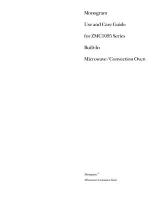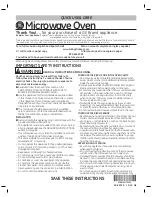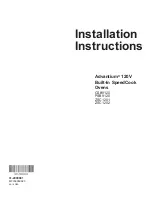
30
Catalytic layer
• Catalytic enamel is soft and sensitive to mechanical stress; therefore, the use of abrasive
cleaners and sharp objects is not recommended.
• Coarse catalytic enamel speeds up the disintegration of grease and spills. Minor stains that remain
after cooking normally disintegrate. In general, the stains will disintegrate at temperatures above
220°C.
Cleaning
Oven
• The oven can be cleaned in a conventional manner (with detergents, oven spray), but only with
stubborn stains.
When dealing with stubborn stains:
The oven should be cooled down before each cleaning process.
• Clean the oven and accessories after each use to prevent the dirt from being burnt onto the oven.
• The easiest way to remove grease is by using warm soapsuds while the oven is still warm.
• In case of stubborn dirt, use conventional oven cleaners. Then, rinse the oven thoroughly with
clean water to remove all residues of the cleaner.
• Never use abrasive cleaners such as steel wool, abrasive dish washing sponges, stain removers,
etc.
• Lacquer-coated, stainless steel, and zinc-coated surfaces, as well as aluminium parts,
should never come into contact with oven cleaning sprays, as these may cause damage
and discolouration. The same applies for the thermostat sensor and the heaters accessible
at the upper part.
• When purchasing and dispensing detergents, observe the instructions provided by cleaning
agent manufacturers.
Steam clean function
• For regular cleaning of your oven, the following procedure is recommended: rotate the
operation mode selection dial to the position . Set the temperature selection dial to 70°C.
Pour 0.6 litre of water into deep baking tray and insert it into the first shelf position. After
thirty minutes, the food residues on the enamel will have softened, allowing you to wipe
them with a damp cloth.
Maintenance and Cleaning













































